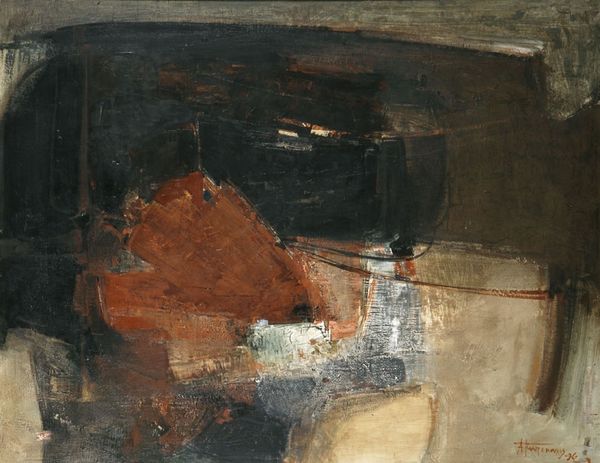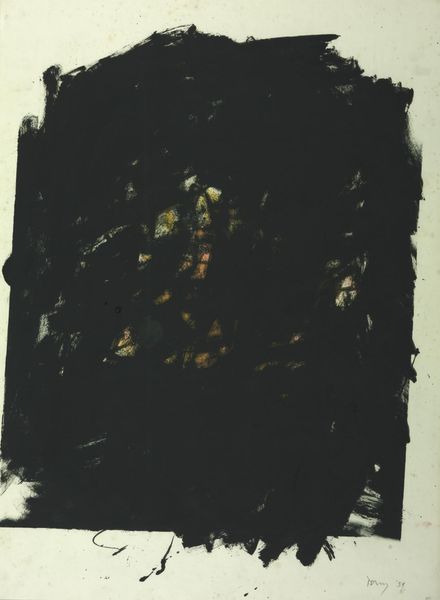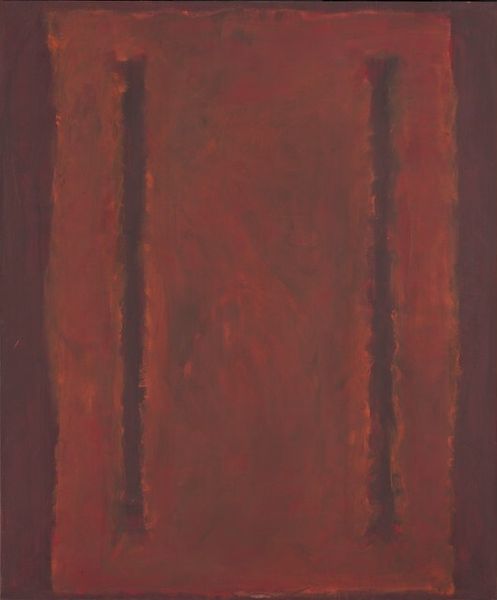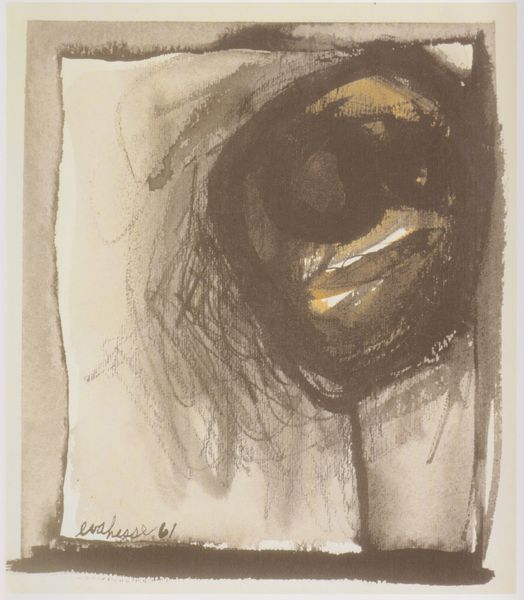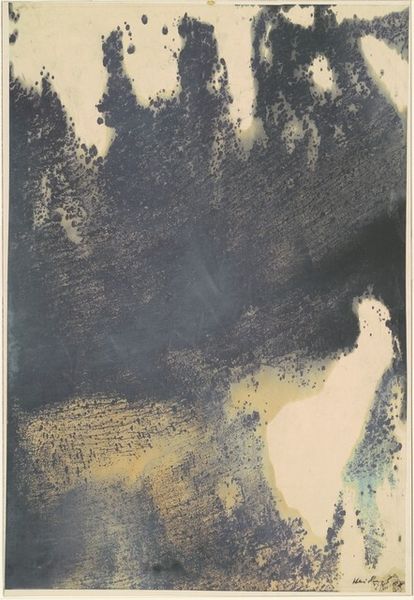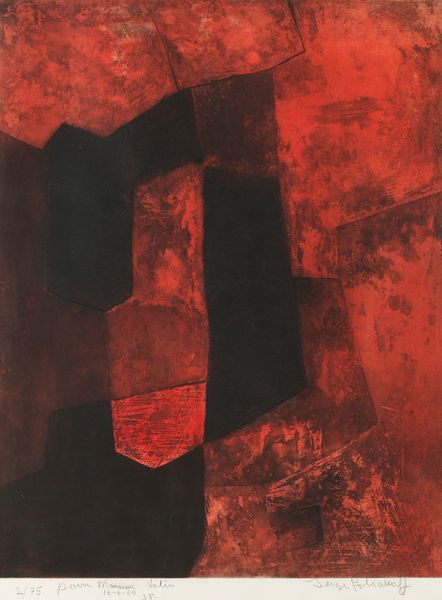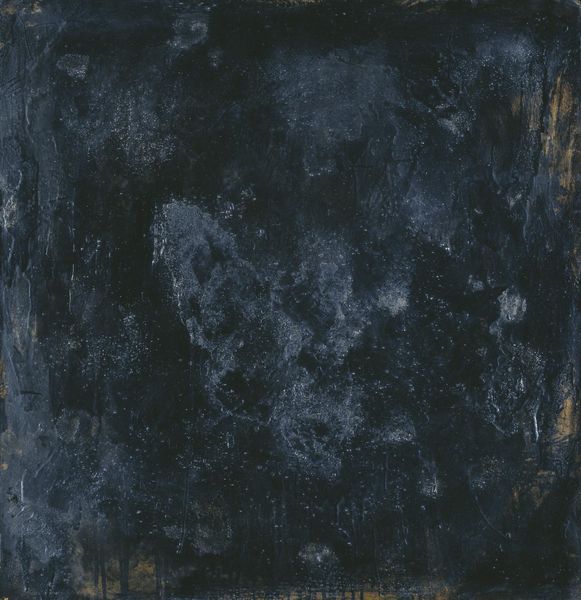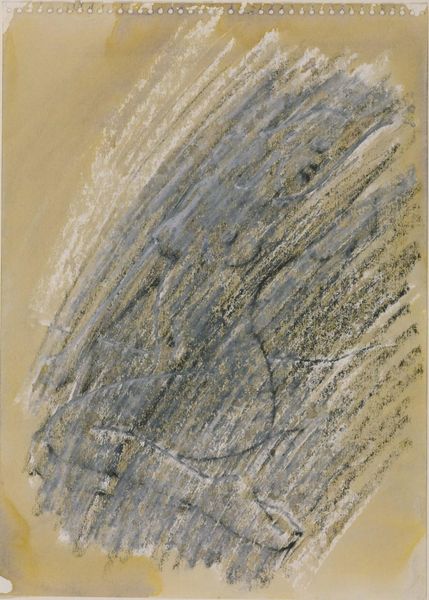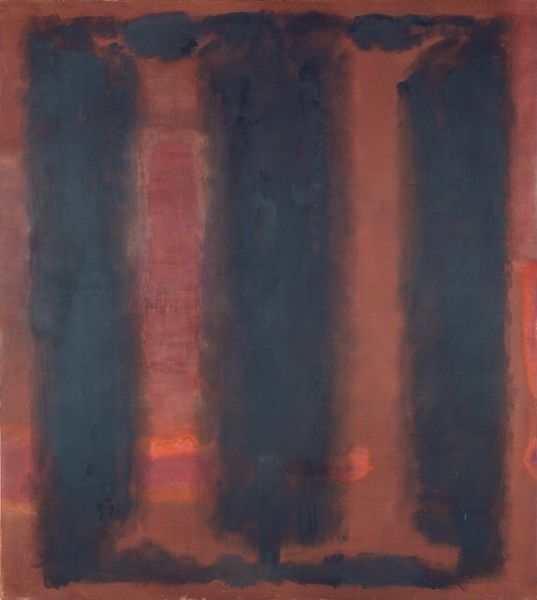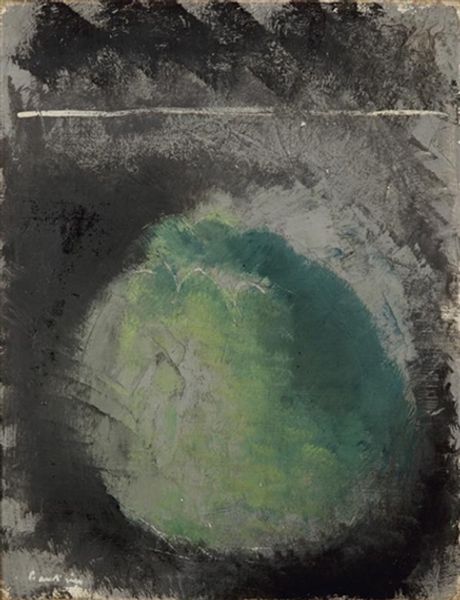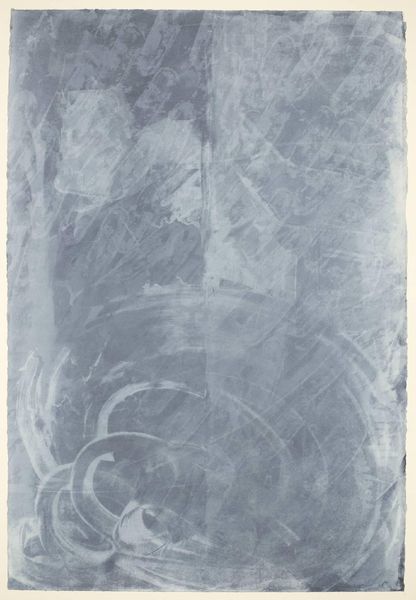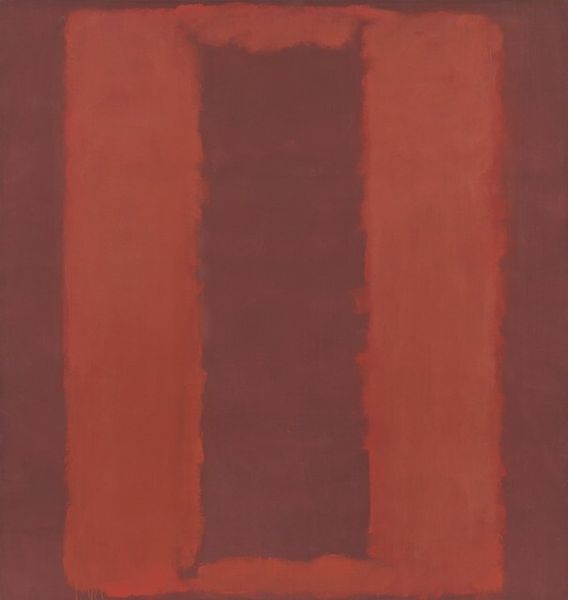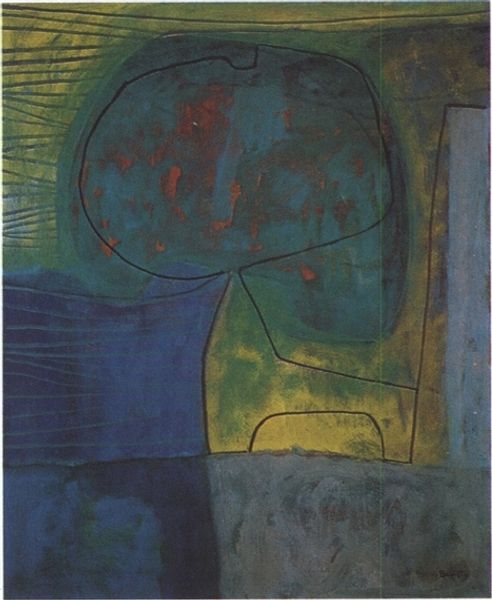
drawing, pastel
#
portrait
#
abstract-expressionism
#
drawing
#
charcoal drawing
#
figuration
#
pastel chalk drawing
#
abstraction
#
pastel
#
watercolor
#
monochrome
Copyright: Jean Fautrier,Fair Use
Curator: This piece is entitled Tête de profil, attributed to Jean Fautrier. There’s no date associated with it, but we believe it belongs to the artist’s body of works of monochrome portraits using mediums such as pastels, charcoal and watercolors. What are your initial thoughts? Editor: A quiet sadness hangs over it. It’s muted, like a memory fading. I see a ghost of a person, caught between worlds, maybe? I feel an ache of something unnamed looking at it. Curator: The ambiguity of the work is quite compelling. Fautrier produced his series of portraits during times of conflict, of extreme political polarization. We can see how he created a representation that avoids specificity by combining drawing and abstraction. It is as if trauma has erased details and blurred edges. Editor: That resonates so much. You can almost feel that weight, can't you? How war steals clarity, leaves you with only shadows of what once was. The color palette, almost entirely grey, echoes this feeling perfectly. What do you make of the scale and texture? Curator: Indeed, the color reinforces that, and texture as well, it's really relevant to think of the materials chosen, perhaps even driven by resource limitations and a need for accessibility, but its subdued nature becomes a statement. We need to ask: whom do these portraits depict and what can we learn from those troubled times and people’s sufferings. Editor: Absolutely. And there's something universal about that profile too. Anyone can project their own grief or their own experience onto it, which makes it incredibly powerful, in a weirdly intimate way. The artist created a perfect framework, as if he let us in to finish the job. Curator: In that sense, it allows viewers to actively participate with the piece by bringing in personal narratives and interpretations of broader collective experiences of violence. It gives access to dialogue, both private and public, of historical events and trauma. Editor: Thinking about it now, I almost see an unfinished symphony in shades of gray. This head almost seems a symbol not just of loss but resilience in the face of chaos... Curator: Yes, an important symbol and constant reminder. These kinds of considerations push us to engage critically with artworks to develop a better understanding of difficult but valuable historic events and realities. Editor: Agreed, sometimes the most unsettling works of art are the most human.
Comments
No comments
Be the first to comment and join the conversation on the ultimate creative platform.
